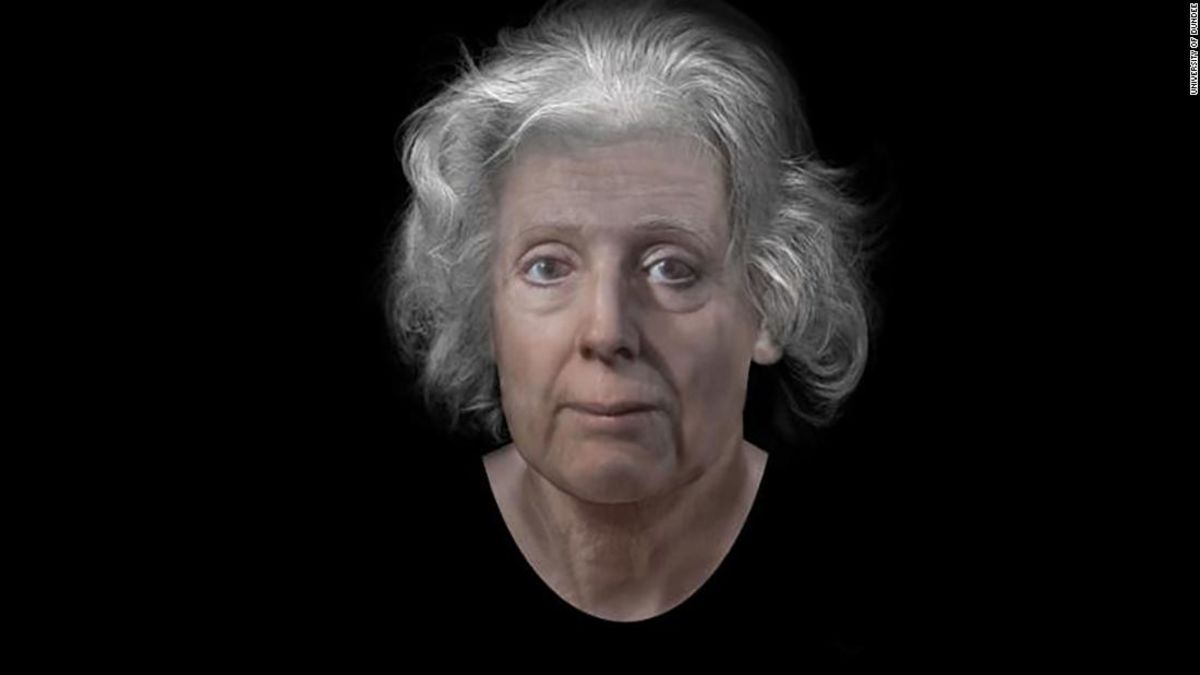Editor’s Note — A team at Dundee University made a digital reconstruction of Lilias Adie’s face, based on photographs taken on her skull before it disappeared. (Credit: University of Dundee)
Lilias Adie died in prison in 1704, before she could be convicted, strangled and burned at the stake for a crime to which she had reportedly confessed — of being a witch, and having sex with the devil.
She was buried on a beach in Torryburn, Fife by locals — who were so concerned that she might “reanimate” and rise from her grave that they buried her under a large stone.
But despite their best efforts to keep Adie in one place, her skull and bones were exhumed and removed from the burial site in 1852 by curio hunters — collectors of antiquities. Her head later found itself in the possession of St Andrew’s University Museum, where it was photographed in 1904 before going missing, along with the rest of her remains.
Now, a local government official at Fife Council is launching a campaign to track down all of Adie’s remains, so she can be laid to rest.
“It’s important to recognise that Lilias Adie and the thousands of other men and women accused of witchcraft in early modern Scotland were not the evil people history has portrayed them to be. They were the innocent victims of unenlightened times,” councillor Julie Ford, who is leading the campaign, said in a statement.
“It’s time we recognized the injustice served upon them. I hope by raising the profile of Lilias we can find her missing remains and give them the dignified rest they deserve,” she added.
Douglas Speirs, an archeologist for Fife Council, told CNN that according to records, around 3,500 women were executed as witches in Scotland between 1560 and 1727, but it is likely that as many as 6,000 were killed.
Speirs said there was a “short-lived witch-hunting craze” in the Fife area, sparked by illness among local residents, which ultimately led to the arrest of Lilias Adie, who was in her late 50s or early 60s. Adie was “treated roughly” in prison, Speirs said, and was routinely interrogated and deprived of sleep before a confession was extracted from her.
While the team hasn’t yet managed to find Adie’s remains, it has discovered some walking sticks made from the dead woman’s coffin.
As well as wanting to track down and bury Adie’s remains, Speirs said, the team wants to raise awareness of the suffering and persecution of women accused of witchcraft in Scotland.
“It’s time to move the narrative away from the Halloween-style figure of the fun witch, and recognize the historic gender bias and suffering that women were exposed to in the name of witch-hunting,” he said.
